Life in the Salt Marsh
Aerial view of The Wetlands Institute and expansive tidal marshes.
Coastal marshes, tidal creeks and bays are the cradle of life. They host a phenomenal diversity of wildlife, and their intrinsic beauty is a balm for the soul. They are the foundation of a complex web that is the building block for commercial fisheries, supports local economies, and sustains the coastal way of life.
New Jersey has a wealth of coastal marshes that form a luxurious green ribbon along the Atlantic and Delaware Bay coasts. The marshes are incredibly rich in life, but very few of us have the opportunity to explore life within the carpet. At first glance from a passing car or boat, the meadows look like a static green expanse, but a journey into the heart of these marshes reveals so much more.
The marshes that dominate the back bays are tidal marshes, meaning that the twice-daily tides flood portions of the marshes every day. Other portions of the marshes are flooded only during the higher-than-average tides that come with the full and new moons. Still other portions are flooded only by the tides that come with storms. As seas rise, more and more of the marsh is being flooded more often compared to just a few years ago.
Salt water controls nearly every aspect of life in the marshes, including the plants and animals that use the marshes or make their homes in them. The salty environment is very harsh, and the plants and animals of the salt marsh have special adaptations and lifestyles that allow them to make a living here.
Our tidal marshes are a complex mosaic of marsh grasses and plants, interspersed with non-tidal pools and bisected by tidal creeks of many sizes. The richness of the marshes comes from this mosaic that provides a wide variety of habitats, shelter and food. The zones in the marsh are defined by their elevation, which determines how frequently they are flooded by tides.
One type of grass dominates New Jersey’s tidal marshes – smooth cordgrass, or Spartina alterniflora. Along the marsh and tidal creek edges, this dark green grass can grow very tall and for this reason is typically called tall-form Spartina. The tall-form grasses are inundated twice daily by tides, and receive oxygen-rich waters and nutrients from this tidal flushing, helping them grow to a height of 6-to-8 feet. Behind and in the interior of the marsh platform, tidal flooding occurs less frequently, and as a result, the grasses are much shorter. They are also smooth cordgrass, though, but this is the short-form Spartina. In late August, a delicate purple hue colors the marsh. This comes from the sea lavender, a plant that favors marsh areas that are more irregularly flooded. Another interesting plant of the marshes is glasswort, sometimes locally called pickleweed. Virtually all salt marsh plants, except the glassworts, have mechanisms for getting rid of sea salt they absorb from their salty environment. Glassworts are succulents that concentrate the salt in special chambers in their cells. Glassworts have been used for centuries as a vegetable or garnish and can be found on gourmet menus today as “sea beans.”
The animal life of the grassy tidal marshes is varied and diverse. Tides again play an important role in the distribution of animals. At high tide, blue crabs and northern diamondback terrapins feed among the tall cordgrass stalks. Terrapins are hunting fiddler crabs, various types of snails, small mussels, and whatever else they can capture. Embedded in the marsh and tidal creek edges, large numbers of dark mussels with ribbed shells lie partially buried in the mud. These ribbed mussels are extremely important in stabilizing the marsh edge and creek banks in the marsh. They produce very strong protein-based fibers to anchor themselves to the bottom, thus helping to glue together the marsh edge.
At low tide, and in the marsh interior, numerous species of birds (such as clapper rails, glossy ibis, great and snowy egrets, and little blue and tricolored herons) search the marshes for the same food. Fiddler crabs are most abundant at low tide and in the marsh interiors. Estimates of thousands or even tens of thousands of fiddler crabs per acre are common. Male fiddler crabs have a greatly enlarged claw that they wave in the air to attract female crabs that lack this claw.
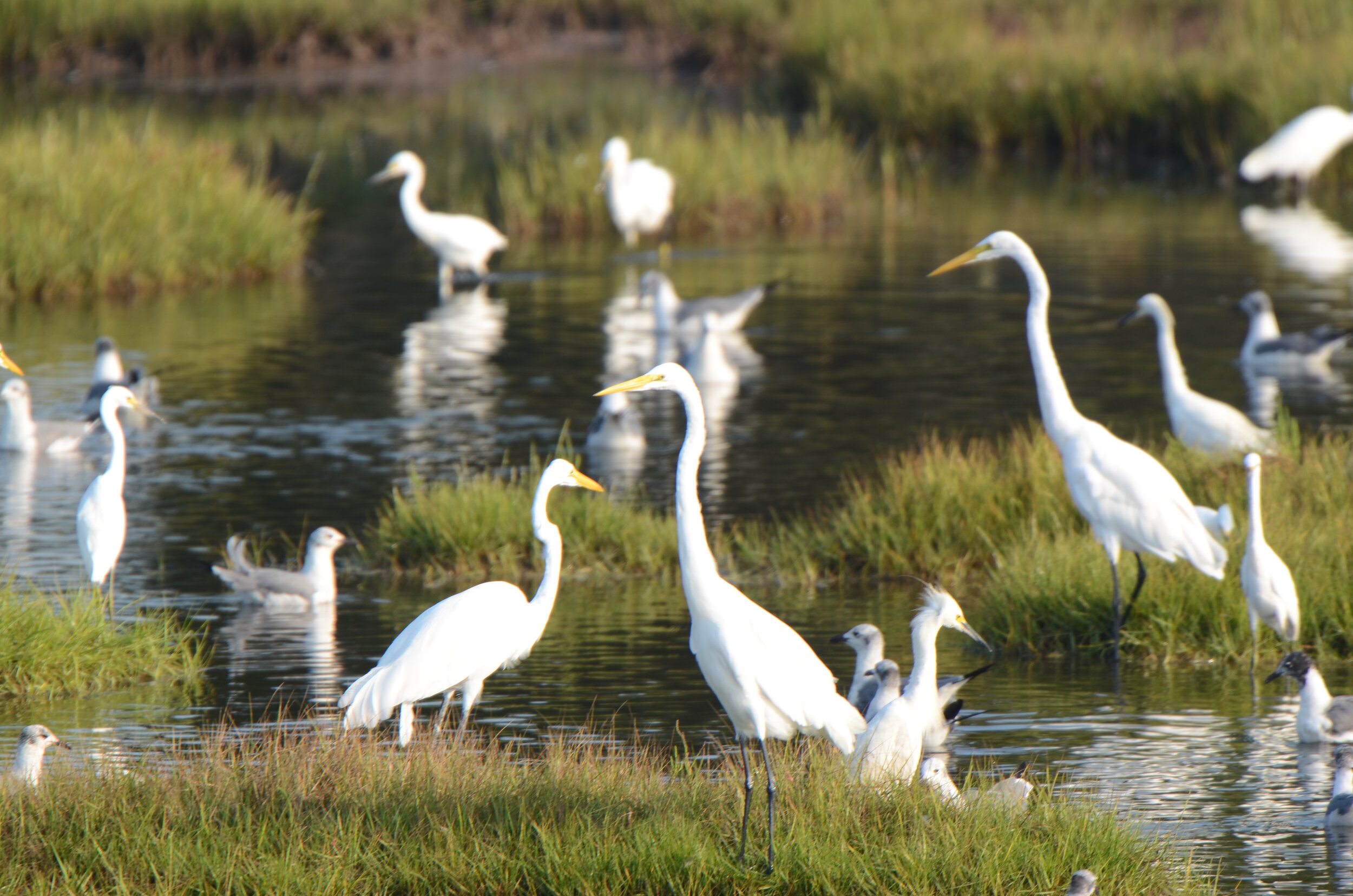
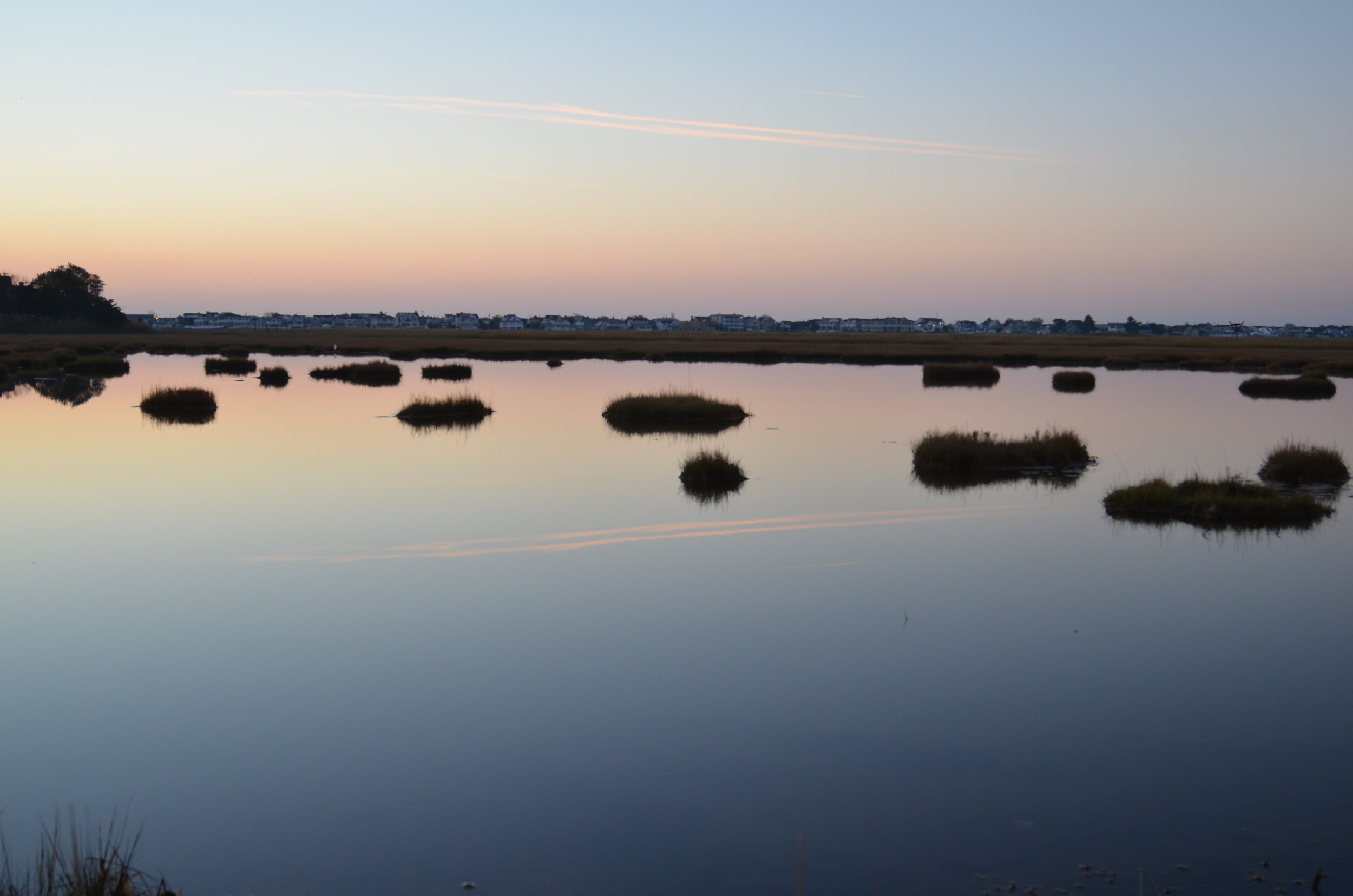
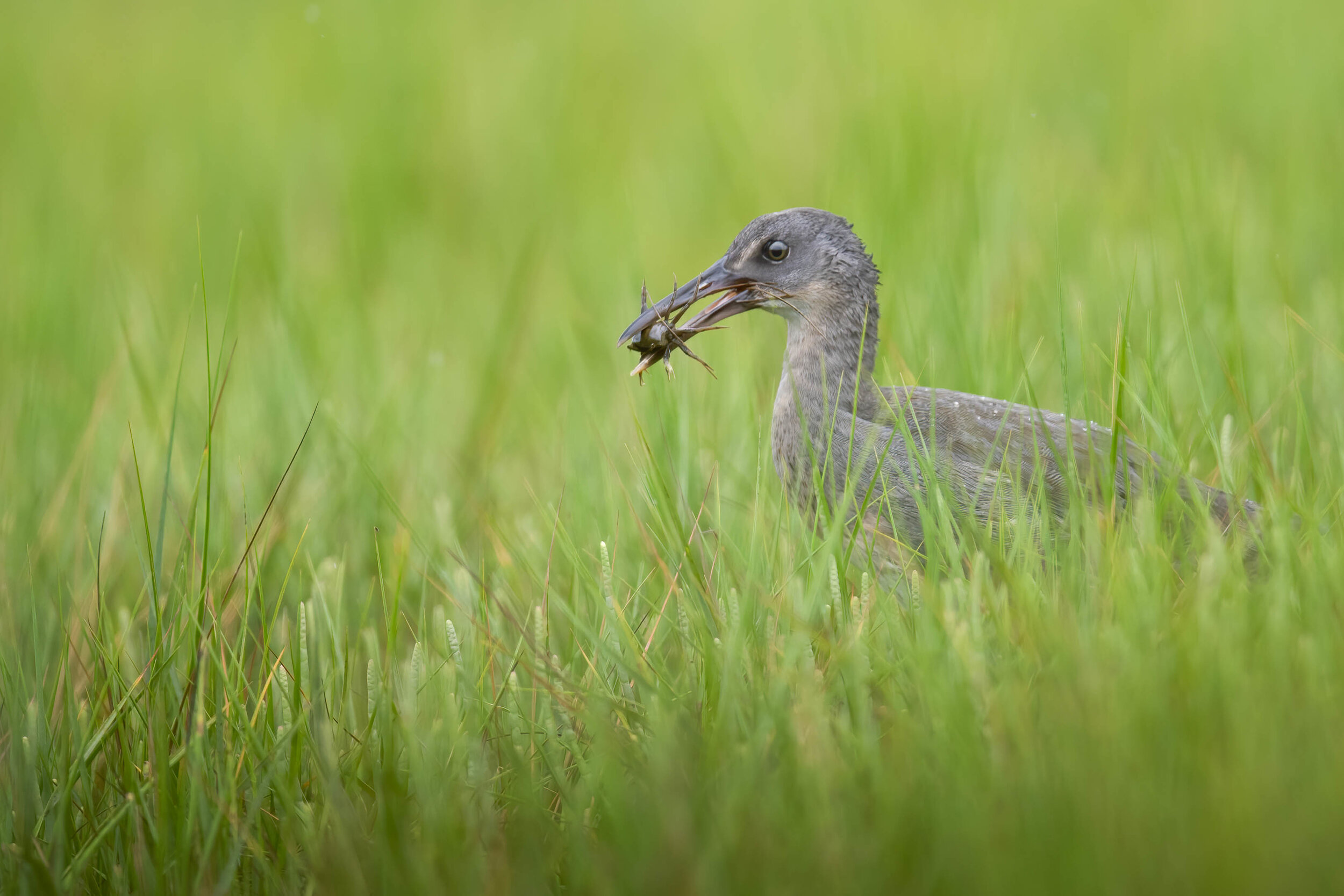
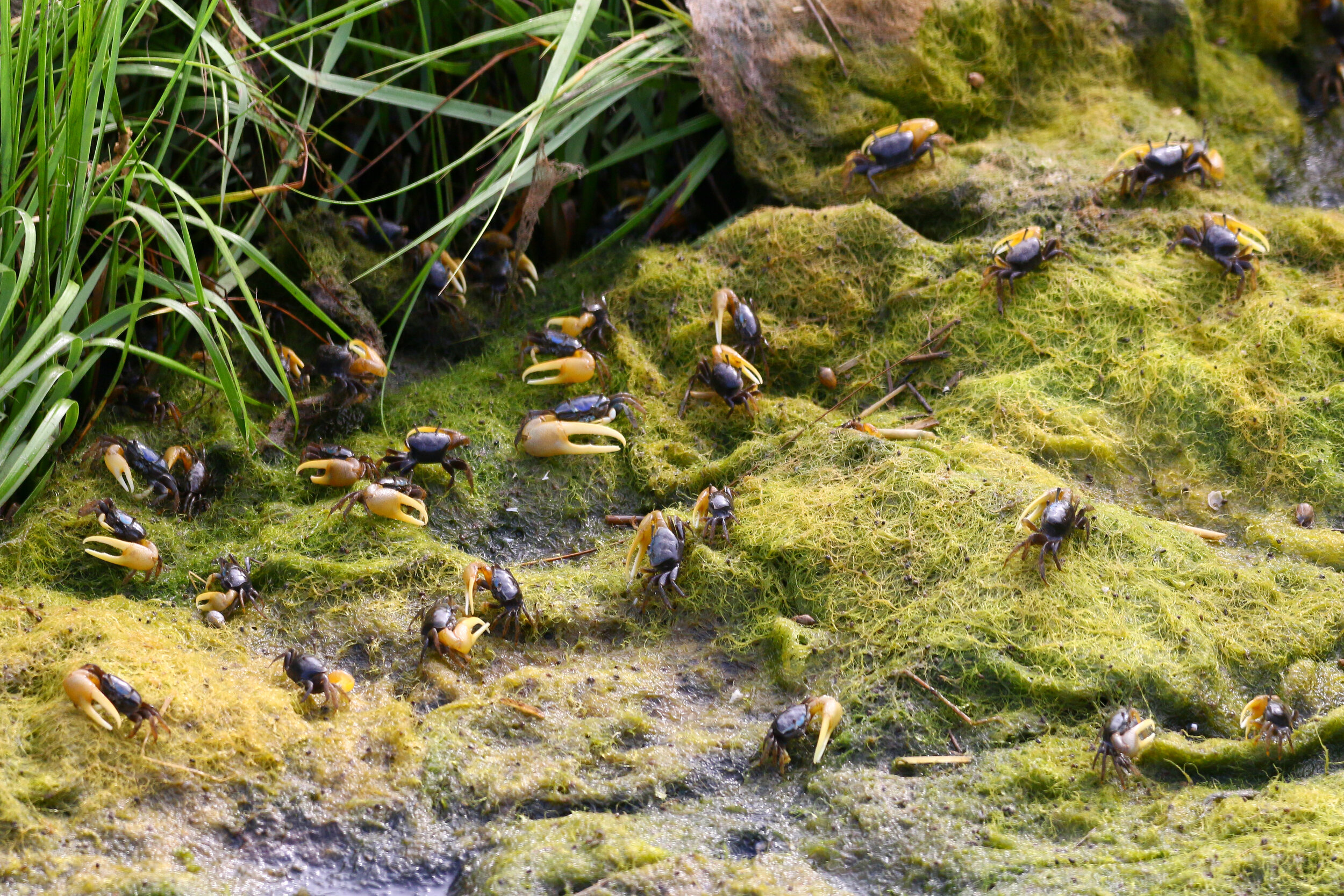
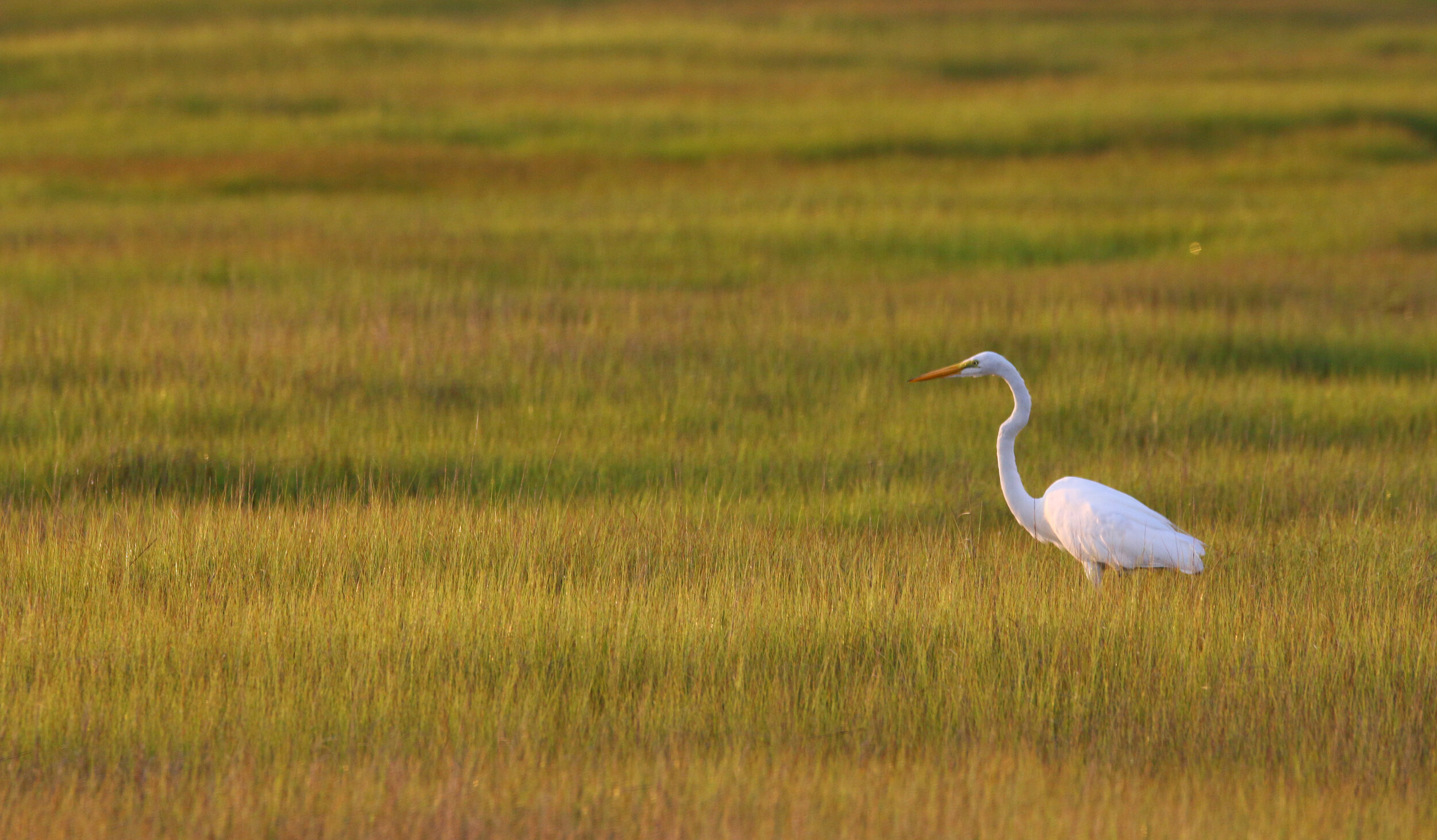
The marsh interior is also an important area for nesting birds. Laughing gulls, clapper rails and willets all nest in the dense Spartina grasses. With sea level rise, marsh interior environments are being flooded more often, challenging the nesting habits and success of these birds that balance the need to hide nests low in the grasses and the risk of nest flooding.
Salt pannes are areas within the marsh interior in which grasses are absent. Some are permanently flooded shallow pools about 1 foot deep, while others are open muddy areas. Flooded pannes are extremely important components of healthy marsh ecosystems. During higher high tides, small fish and crabs are swept into these pools, where they become trapped until the next flooding tides, which can be several days to weeks away. Many wading birds, as well as diving fish-eaters including terns, descend on these trapped prey enjoying an easy meal. These pannes frequently have tufts and clumps of grasses that are serve as important resting areas for migratory shorebirds. The pannes also provide important habitat for wintering black ducks and are places where diamondback terrapins stage in preparation for their journeys to the uplands when they are nesting.
Marshes and tidal creeks are critical nursery grounds for fish and shellfish. More than 75% of the commercially and recreationally important species like blue crabs, oysters, clams, striped bass, flounder, and many others rely on marshes during all, or part, of their life cycle. Marshes are the kidneys of our coastal waters, naturally improving the quality of waters passing through them by trapping sediments and converting dissolved chemicals into harmless compounds. Our tidal marshes also provide us a direct and immediate benefit. They are crucial to coastal resiliency and offer community protections against damage to properties and infrastructure and loss of life during storm surge and flooding. Research from the insurance industry showed that marshes directly prevented more than $625 million in direct flood damages during Superstorm Sandy, further underscoring their value.
There is so much to appreciate and love about the extensive tidal marshes in our area. They are a largely unspoiled gem that enhances life on so many levels. Whether the value of these marshes comes from their wild and untamed nature, the intrinsic beauty of their peace and tranquility, or from the services they provide, there is something for everyone to love about these marshes.
If you haven’t had an opportunity to get up close and personal with tidal marshes, there is an incredible world waiting to be discovered. You can explore life in the marshes with a visit to The Wetlands Institute. The Institute has two aquarium buildings that house many of the animals of our salt marshes. Take a walk on the elevated marsh walkway for a bird’s-eye view of the marshes, and enjoy a walk on the dock that takes you out into Scotch Bonnet Creek. Discover for yourself the wonders of wetlands.


